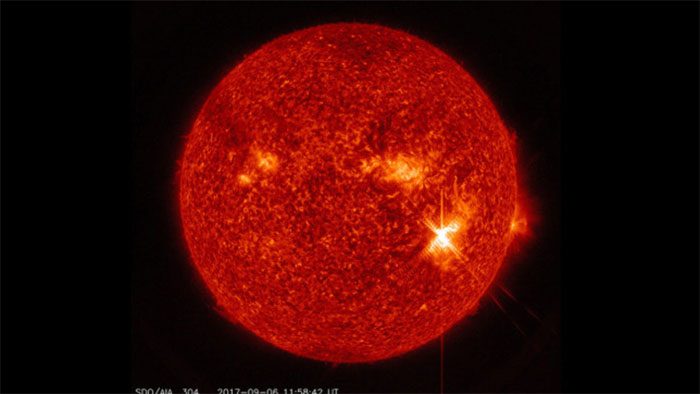The reason the Sun cannot become a black hole
Will our sun become a black hole? According to a new NASA study, it is not possible because it is too small.
The sun needs to be 20 times bigger to be a black hole in the universe. So how will the Sun end its life when it no longer has the light?
A star of this size or more could explode into a supernova at the end of its lifetime before collapsing itself into a black hole, an entity with strong gravitational force. nothing can escape, not even light. Some stars are smaller than that, but big enough to become supernovas, but when they collapse too small, do not have enough gravitational force to become a black hole, they will collapse into a super-dense structure. called neutron stars after supernova explosion. But our Sun is not big enough to be destined to be a neutron star because it only has one tenth of the mass to become a neutron star.

Within six billion years, it will end its life to become a white dwarf.
So what will happen to the Sun? Within six billion years, it ended its life to become a white dwarf, a small, dense remnant of a star, glowing from the remaining heat. This process will begin 5 billion years from now when the Sun runs out of fuel.
Like most stars, during the main stage of life, the Sun generates energy that burns hydrogen atoms in its core, a thermonuclear reaction. After another 5 billion years, the Sun begins to run out of hydrogen to burn in the core, which begins the process of collapse. This allows the Sun to begin to fuse heavier elements in the core region and along with burning hydrogen around the core region.
At this point, the Sun's temperature will rise, the outer layers of the atmosphere around the Sun will expand into outer space, covering the surrounding planets including the earth. (This will make it impossible for Earth to survive the life we already know, although the elements of planetary evolution made it impossible to live earlier.) At this stage, the Sun becomes giant and red, and it will exist for about a billion years, before the Sun collapses into a white dwarf.
Basic knowledge about the Sun
The sun is a star, a very hot air balloon in the center of our Solar System. It has effects far beyond the orbits of distant Neptune and Pluto. Without the sun's energy, there could be no life on earth. Although it is very special to us, there are billions of Sun-like stars scattered in the Milky Way. If the Sun were as tall as a regular front door, the earth would be just like a US 5-cent coin. The temperature in the core of the Sun is up to 27 million degrees Fahrenheit (23 degrees above the Celsius degree).
- The diameter of the Sun: 864 thousand miles (13,904,732.2 km), 109 times the diameter of the Earth.
- Turning time at the equator: 27 days.
- Extreme recording time: about 36 days.
- Surface temperature: 10 thousand degrees F.
- Ingredients: Hydrogen, Helium.
- Discover the mystery of the most exotic black holes in the universe
- 740 million light years away is a completely different universe of black holes
- Discovering 'super black holes' is 12 times bigger than the Sun.
- Evidence of the power of black holes
- Black hole detection
- Video: Top 5 biggest black holes discovered by NASA in 2017
- The galaxy's giant black hole
- The first time I took a picture of a black hole three million times bigger than Earth
- Monster black hole 'belching' twice after swallowing gas
- The first time a black hole was discovered, it swallowed a star
- What scary thing will happen if you touch a black hole?
- This is the surreal image of the black hole in the universe
 Van Allen's belt and evidence that the Apollo 11 mission to the Moon was myth
Van Allen's belt and evidence that the Apollo 11 mission to the Moon was myth The levels of civilization in the universe (Kardashev scale)
The levels of civilization in the universe (Kardashev scale) Today Mars, the sun and the Earth are aligned
Today Mars, the sun and the Earth are aligned The Amazon owner announced a secret plan to build a space base for thousands of people
The Amazon owner announced a secret plan to build a space base for thousands of people